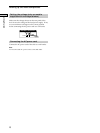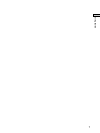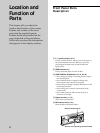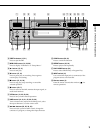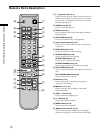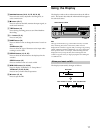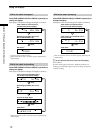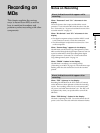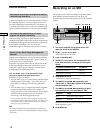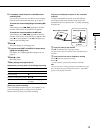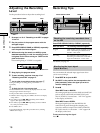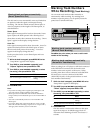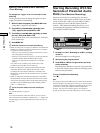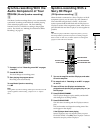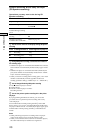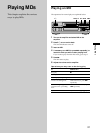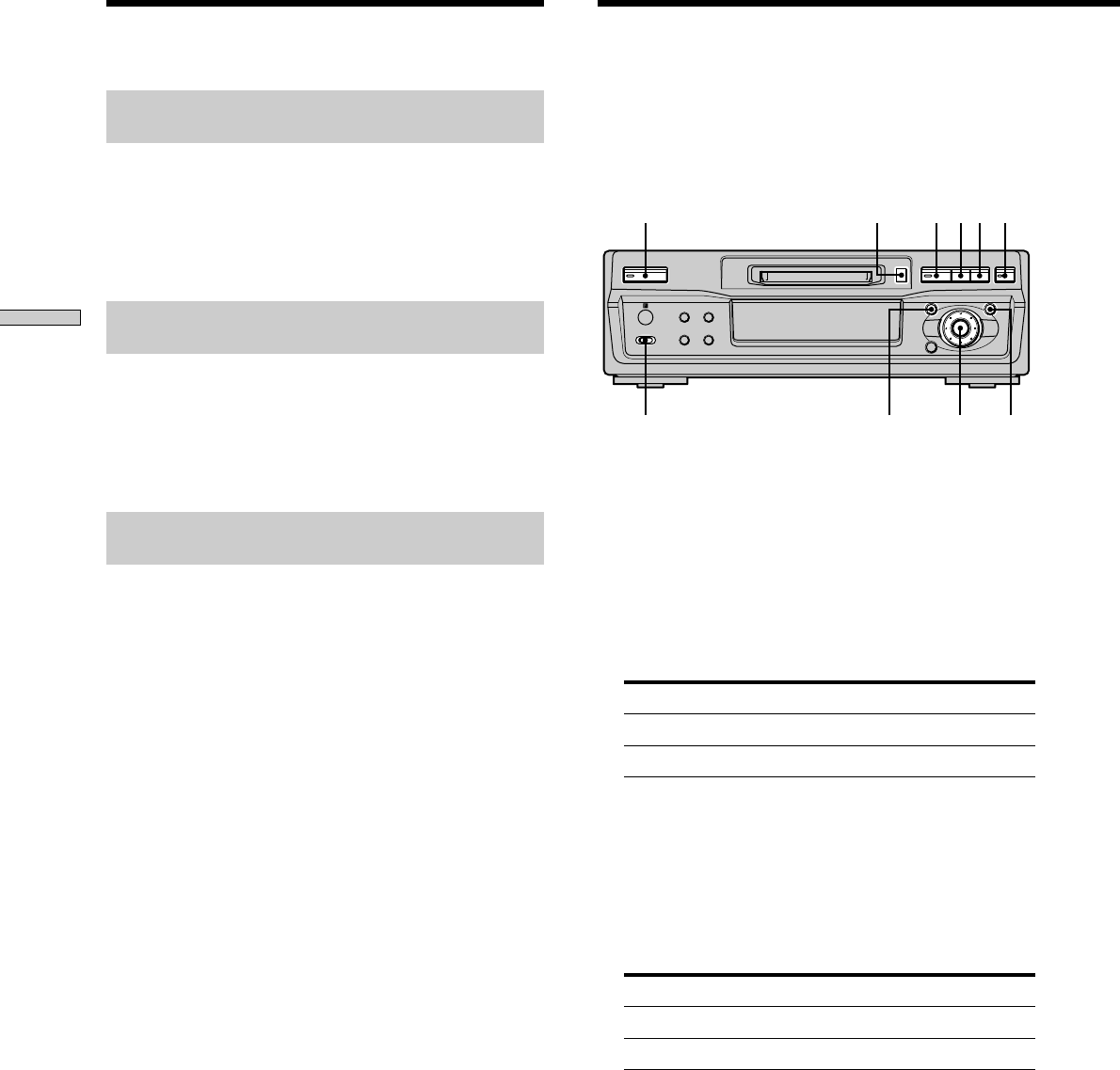
14
Recording on MDs
Automatic conversion of digital sampling
rates during recording
A built-in sampling rate converter automatically converts
the sampling frequency of various digital sources to the
44.1 kHz sampling rate of the MD deck. This allows you
to monitor and record sources such as 32- or 48-kHz DAT
tapes or satellite broadcasts, as well as the CDs and MDs.
Automatic de-emphasizing of input
signals for digital recording
When recording digital input signals that have been
emphasized in higher frequencies, the deck automatically
de-emphasizes the signals with attenuation proportional
to the degree of emphasis. The level of the de-
emphasized signal is indicated on the peak level meters.
Guide to the Serial Copy Management
System
Digital audio components, such as CDs, MDs, and DATs
make it easy to produce high-quality copies of music by
processing music as a digital signal.
To protect copyrighted music sources, this deck uses the
Serial Copy Management System which allows you to
make only a single copy of a digitally recorded source
through digital-to-digital connections.
You can make only a first-generation copy
*
through a digital-to-digital connection.
Examples are given as follows:
• You can make a copy of a commercially available digital
sound program (for example, a CD or MD), but you
can’t make a second copy from the first-generation
copy.
• You can make a copy of a digital signal from a digitally
recorded analog sound program (for example, an
analog record or a music cassette tape) or from a digital
satellite broadcast program, but you can’t make a
second copy from the first-generation copy.
*
A first-generation copy means the first recording of a digital audio
source through the deck’s digital input connector. For example, if you
record from a CD player connected to the DIGITAL IN connector,
that copy is a first-generation copy.
Note
The restrictions of the Serial Copy Management System don’t
apply when you make a recording through the analog-to-analog
connections.
Recording on an MD
The operations for normal recording are explained below.
If the MD has recorded material on it, the deck will
automatically start recording from the end of the recorded
portion.
INPUT AMS YESMENU/NO
EJECT Zz
N?/1 X x
` / 1
N
zxX
Z
>.
mM
1 Turn on the amplifier and program source, and
select the source on the amplifier.
2 Press ~/1 to turn on the deck.
The switch indicator turns off.
3 Insert a recordable MD.
4 Set INPUT to the position that corresponds to the
input jacks (connector) connected to the program
source.
If the source is connected to the Set INPUT to
DIGITAL IN connector DIGITAL
LINE (ANALOG) IN jacks ANALOG
5 Press MENU/NO twice.
“Setup Menu” appears in the display.
6 Turn AMS (or press ./> repeatedly) until
“Stereo Rec” or “Mono Rec” appears in the display,
then press AMS or YES.
7 Turn AMS (or press ./> repeatedly) to select
the recording mode, then press AMS or YES.
To record in Select
Stereo Stereo Rec (factory setting)
Monaural Mono Rec
Monaural mode allows you to record about twice as
much material as stereo.
8 Press MENU/NO.
Notes on Recording



